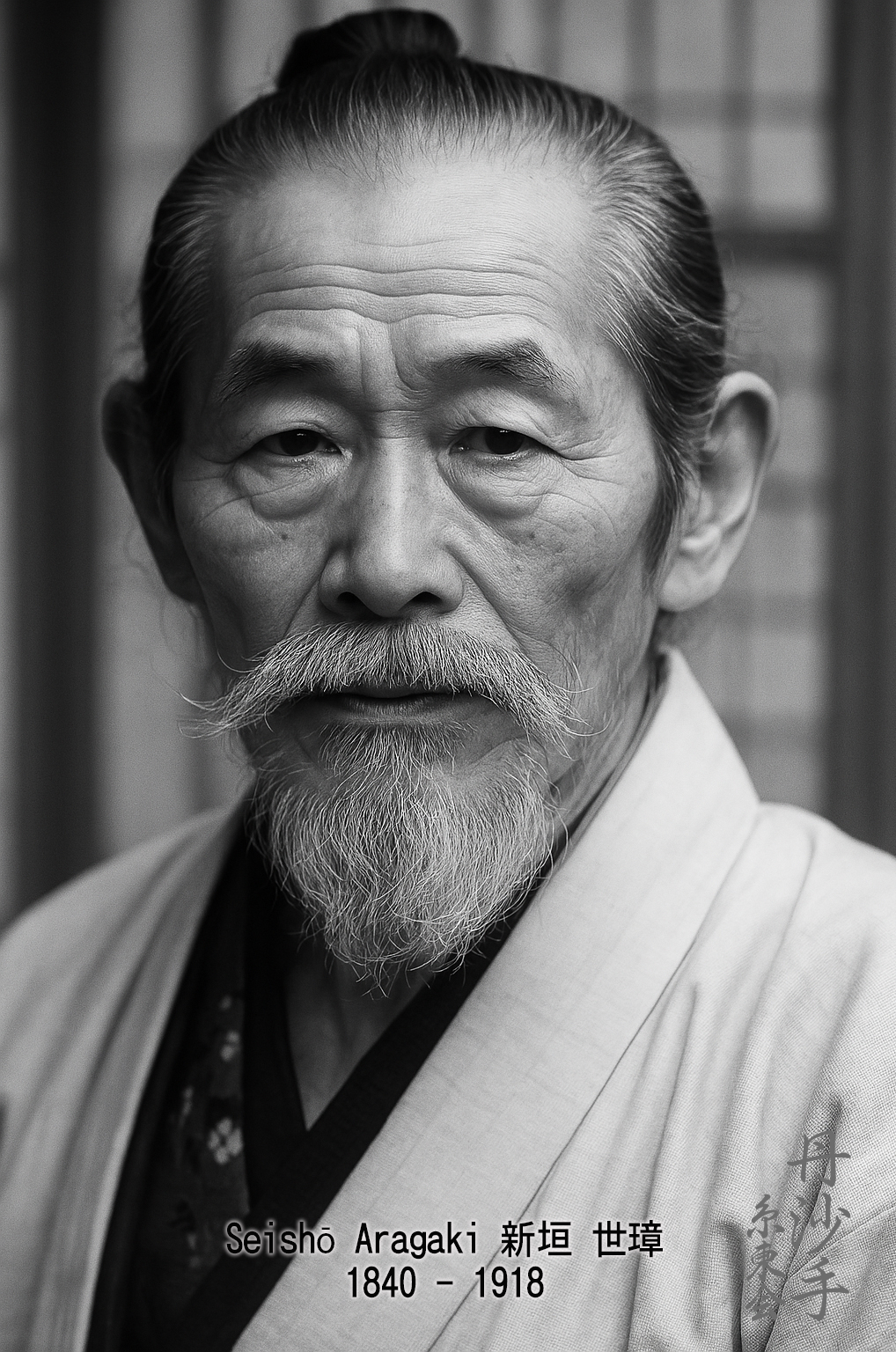Seishō Aragaki (新垣 世璋, 1840–1918) was a respected Ryūkyūan martial artist and court translator whose contributions to the development of Ryūkyūan martial arts were foundational during a critical period of cultural transition. Born in Naha, in the Ryūkyū Kingdom, Aragaki was fluent in both Chinese and Japanese, serving as an official interpreter and emissary for diplomatic missions to Fuzhou, China. His position allowed him unique access to Chinese martial arts and philosophy, which he absorbed and later integrated into the Ryūkyūan systems of self-defense.
Aragaki was deeply trained in Chinese kenpō, bājíquán, qinna, and weaponry such as the sai, bo, and nunchaku. Upon his return to Okinawa, he developed a martial curriculum that reflected both Chinese systems and native Ryūkyūan methods. He is credited with preserving and passing down several core kata, including Niseishi, Sōchin, Unshu, and Sanchin, which were later incorporated into many Okinawan and Japanese karate styles. His teachings placed strong emphasis on deep stances, controlled breathing, internal strength, and the integration of weapon training.
Importantly, Aragaki was a major influence in the development of the Tomari-Te system, one of the three principal roots of Okinawan karate alongside Shuri-Te and Naha-Te. His approach helped shape the technical foundation of Tomari-Te with its characteristic blend of agility, power, and Chinese-inspired kata. Among his most prominent students was Higaonna Kanryō, founder of Naha-Te and teacher of Chōjun Miyagi (Gōjū-ryū founder). Through his teachings, Aragaki helped bridge classical Ryūkyūan and Chinese martial traditions at a time when Okinawan karate was beginning to crystallize as a formalized discipline.
Seishō Aragaki passed away in 1918, leaving behind a legacy of martial depth, cultural exchange, and uncompromising spirit. Though he did not establish a formal school under his own name, his influence echoes through generations of practitioners. As a master, teacher, and cultural link, he remains an essential figure in the history of Ryūkyūan martial arts and the evolution of traditional karate.






